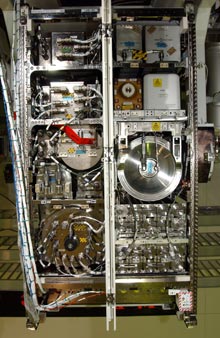So, as NASA calls it, it is ready to go “Where no filter has gone before” in order to conserve water onboard the International Space Station as well as other ventures throughout the Earth’s orbit. It costs almost 10,000 dollars to deliver one pint of water to the giant space station orbiting around the world so it is necessary to recycle as much as possible. The water conservation has always been an important part in NASA’s space programs, but other space institutions haven’t promoted it for some reason. The Russians who were joint-pioneers of the Space Odysseys don’t recycle their water in space at all.
But how did the newer filtration systems come into being? In the 1980s, when the International Space Station was relatively new, the Americans wanted lavatories of their own since they like to do everything differently. The waste water of those toilets was then purified using iodine-based systems. In subsequent years, a new system was brought into place that accumulated water from sweat, shower runoff and even breath to be brought back to use. In 1998, owing to the water shortage aboard the space station, NASA turned toward purifying urine as well. Not just urine from humans, all the experimental animals on the ship also released urine and it even devised a system to collect and recycle it for reuse.
The Russians on the other hand have never wanted to recycle urine, although they do have systems in place to process shower runoff, sweat and other waste water, but in the case of urine, they aren’t very enthusiastic. It was for this reason that both people have had different washrooms from the very early days of the International Space Station. Come one people, can’t you just let it go even on such a uniting platform?
The ISS has enough water supply to last several months including an emergency tank that contains 2000 liters of water. It is only to be used if water from the Earth is delayed due to one reason or another. It has been a problem is recent years when newer kind of rockets are being made and many have bitten the dust. Space X, NASA and the Soviet Cosmodrome in Kazakhstan all have experienced rocket failures in recent months. Billions of dollars worth of equipment and supplies have been lost a result. Finally on Aug 19, a supply ship was able to dock at the international station and resume supply, easing the stress on the water manager aboard the ship.



